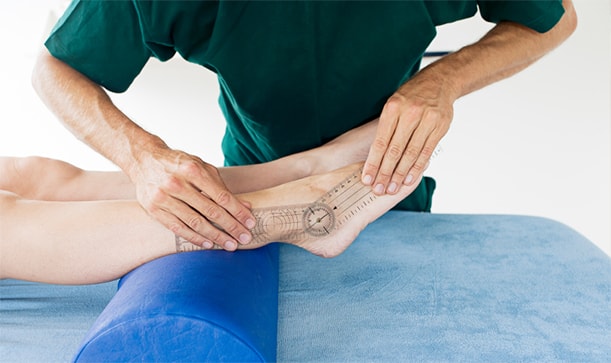CK Physiotherapy
AREAS COVERED
W7, W5, W13, Ealing, West London
57 Elthorne Avenue
Hanwell, W7 2JY
T: 020 8566 4113
M: 079 572 46185
E: info@ckphysio.co.uk
Location / Parking
We are situated in Hanwell, between Boston Manor Road and Northfields Avenue, south of the Uxbridge Road.57 Elthorne Avenue
Hanwell, W7 2JY
There are parking restrictions Mon - Fri 9-10am and 2-3pm. If you need a permit during this time please inform your therapist when you arrive. There are no parking restrictions at other times.
Opening Times
Please phone the number above during working hours to make an appointment. Our reception service will be happy to book your session.
London Underground / Bus Services
London Underground
10 min. walk from Boston Manor Tube Station.
15 min. walk from Northfields Tube Station.
Bus Service
E8, E3, E2, 207, 607, 83
Request Call Back
Our Blog
FAQs to Physiotherapists: Is Manipulative Therapy Effective?
By: BryanKelly (Psst, View author in Google Plus) Date: Jul 28th, 2020If you’ve ever visited a physiotherapist the chances are that they’ve used some form of manipulative therapy to treat your ailment. Whenever a therapist uses their hands to massage, pull, push, knead, or otherwise touch a patient, they’re using manipulative therapy techniques.
Manipulative therapy is used on a variety of muscular and joint issues, and it’s one of the most effective tools in the physiotherapist’s arsenal. Physios are highly knowledgeable when it comes to the intricacies of bones, muscles, tendons, cartilage and joints of the human body, so they can manipulate patients to relieve pain and encourage healthy movement and alignment.
In this article, we’ll examine what manipulative therapy consists of in its various forms, what issues and ailments it can be used to treat, and why patients should consider this type of treatment.

What conditions can manipulative therapy be used for?
Some of the most common conditions physiotherapists encounter on a daily basis can be treated with manipulative therapy.
Almost anything that’s musculoskeletal in nature, affecting the joints, muscles and tissues can be approached with some sort of manual intervention to provide relief for the pain or problem. It’s a non-invasive, science-based methodology that can address neurological, neuro-musculoskeletal, and cardiovascular issues.
Conditions that a physiotherapy clinic will tackle with manipulative therapy include:
• Reduced range of motion
• Tenseness or stiffness in muscles or joints
• Soft tissue swelling or inflammation
• Back and neck pain
• Sports injuries
• Repetitive strain injury (RSI)
• Whiplash
• Sciatica
• Headaches
Often issues such as neck pain are caused by stiff muscles which need relaxing. A trained physiotherapist will be able to identify the cause of a problem and manipulate the parts of the body in a way to alleviate the symptoms, sometimes over a series of sessions.
What manipulative therapy techniques are there?
Manipulative therapy is not one homogenous treatment method physiotherapists use for all of the above conditions. It consists of a range of approaches, each appropriate for different complaints. Here are some of the most common techniques at physiotherapists’ disposal:
Massage
There are many different kinds of massage, whether the therapist is trying to knead deeply into a muscle or tissue to relax a tense area, or a lighter skin stroking to encourage blood flow. Whatever the kind of physiotherapy massage, they will use their hands, sometimes applying massage oil, to manipulate the part of the body causing pain or discomfort.
Assisted Active Range of Motion (AAROM)
Joints can experience limited range of motion due to inflammation or stiffness in the joint or muscle. In this type of treatment, the patient performs as much motion as they can whilst the physiotherapist helps increase the range of movement.
Passive Range of Movement
As above, but when the patient completely relaxes or cannot move the limb or body part themselves. The physiotherapist uses manual force to take the joint through the full range of motion.
Stretches
Similar to the range of movement exercises, therapists can use many types of a stretch to increase flexibility in a joint.
Joint Manipulation/Mobilisation
These are thrusting, oscillating and other movements of a joint with different pressures, directions and amounts of force to reduce pain or restore function.
Lymph Drainage
Lymph is a fluid that can collect in an afflicted area of the body. To stop this build-up, physiotherapy treatment can involve gentle massage of the affected region to encourage the fluid to move away and stop the associated swelling, pain and/or limited range of motion.
What to look for when considering manipulative therapy
The most important thing when looking for a course of manipulative therapy is the expertise of the practitioner. You need to trust that the healthcare professional manipulating your body knows what they’re doing and their interventions are going to help, rather than harm you further.
It’s crucial that you go to a qualified specialist who is going to permanently solve your issue by going to the root cause, not just provide short-term relief.
A physiotherapist who is a member of the Chartered Society of Physiotherapists is guaranteed to be properly trained and up to date with the latest scientific research. Unfortunately, the same cannot be said for some chiropractors or other unregulated, non-medical practitioners.
Trust is paramount when seeing somebody who is going to be touching you and handling painful and sensitive parts of your anatomy. This is particularly true when dealing with conditions like back and neck pain, where incorrect treatment can result in potentially damaging consequences.
You may feel increased soreness or stiffness, weakness or fatigue for a short period after a manipulative therapy session. This is quite common and expected if the affected area is tender to start with. However, in rare cases, inexpert treatment can have more serious adverse effects.
It’s also advisable to consult with your therapist before going in for a manipulative therapy session. You will feel more comfortable if a physio is able to clearly explain what they are going to do to identify and treat your particular ailment. A good consultation will prepare you for the kinds of movements and tactile exercises that you’ll undergo and will enable you to ask any questions you may have.
Lastly, there are a few cases where manipulative therapies are not recommended. These include patients with:
• Osteoporosis,
• Some spinal conditions,
• Recent fractures or dislocations, and
• Those on some blood-thinning drugs.
Those are the factors you should discuss with your local physiotherapist during the consultation.
Conclusion
A trusted chartered physiotherapist will know a wide range of manipulative therapy practices to treat a multitude of common ailments. A recommended and professional clinic is the best way to avoid mistreatment and ensure your physical ailments are fixed for good, not temporarily relieved.
CK Physio is a trusted physiotherapy clinic in Ealing with years of experience. Book a consultation with us and you can be sure they’ll work to understand the exact details of your condition and advise the best type of manipulative therapy for you.





